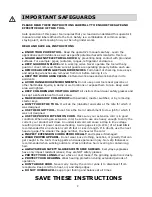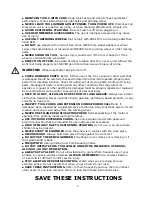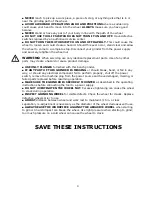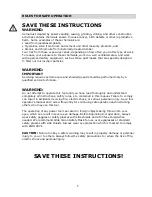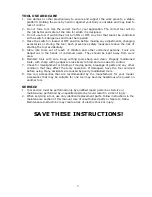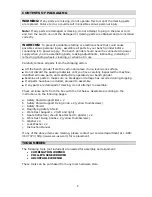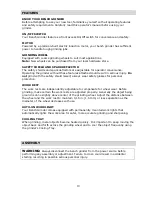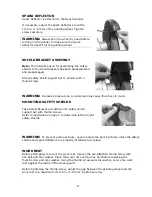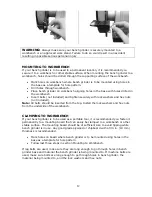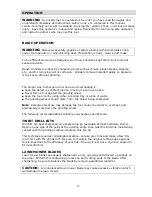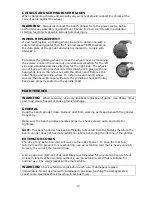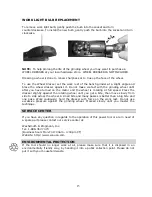
WARNING:
Always make sure your bench grinder is securely mounted to a
workbench or an approved work stand. Failure to do so could result in an accident
resulting in possible serious personal injury.
MOUNTING TO WORKBENCH
If your bench grinder is to be used in a permanent location, it is recommended you
secure it to a workbench or other stable surface. When mounting the bench grinder to a
workbench, holes should be drilled through the supporting surface of the workbench.
•
Mark holes on workbench where bench grinder is to be mounted using holes in
the base as a template for hole pattern.
•
Drill holes through workbench.
•
Place bench grinder on workbench aligning holes in the base with holes drilled in
the workbench.
•
Insert bolts (not included) and tighten securely with lock washers and hex nuts
(not included).
Note: All bolts should be inserted from the top. Install the lock washers and hex nuts
from the underside of the workbench.
CLAMPING TO WORKBENCH
If your bench grinder is to be used as a portable tool, it is recommended you fasten it
permanently to a mounting board that can easily be clamped to a workbench or other
stable surface. The mounting board should be of sufficient size to avoid tipping while
bench grinder is in use. Any good grade plywood or chipboard with a 3/4 in. (19 mm)
thickness is recommended.
•
Mark holes on board where bench grinder is to be mounted using holes in the
base as a template for hole pattern.
•
Follow last three steps in section Mounting to Workbench.
If lag bolts are used, make sure they are long enough to go through holes in bench
grinder base and material the bench grinder is being mounted to. If machine bolts are
used, make sure bolts are long enough to go through holes in bench grinder, the
material being mounted to, and the lock washers and hex nuts.
12



